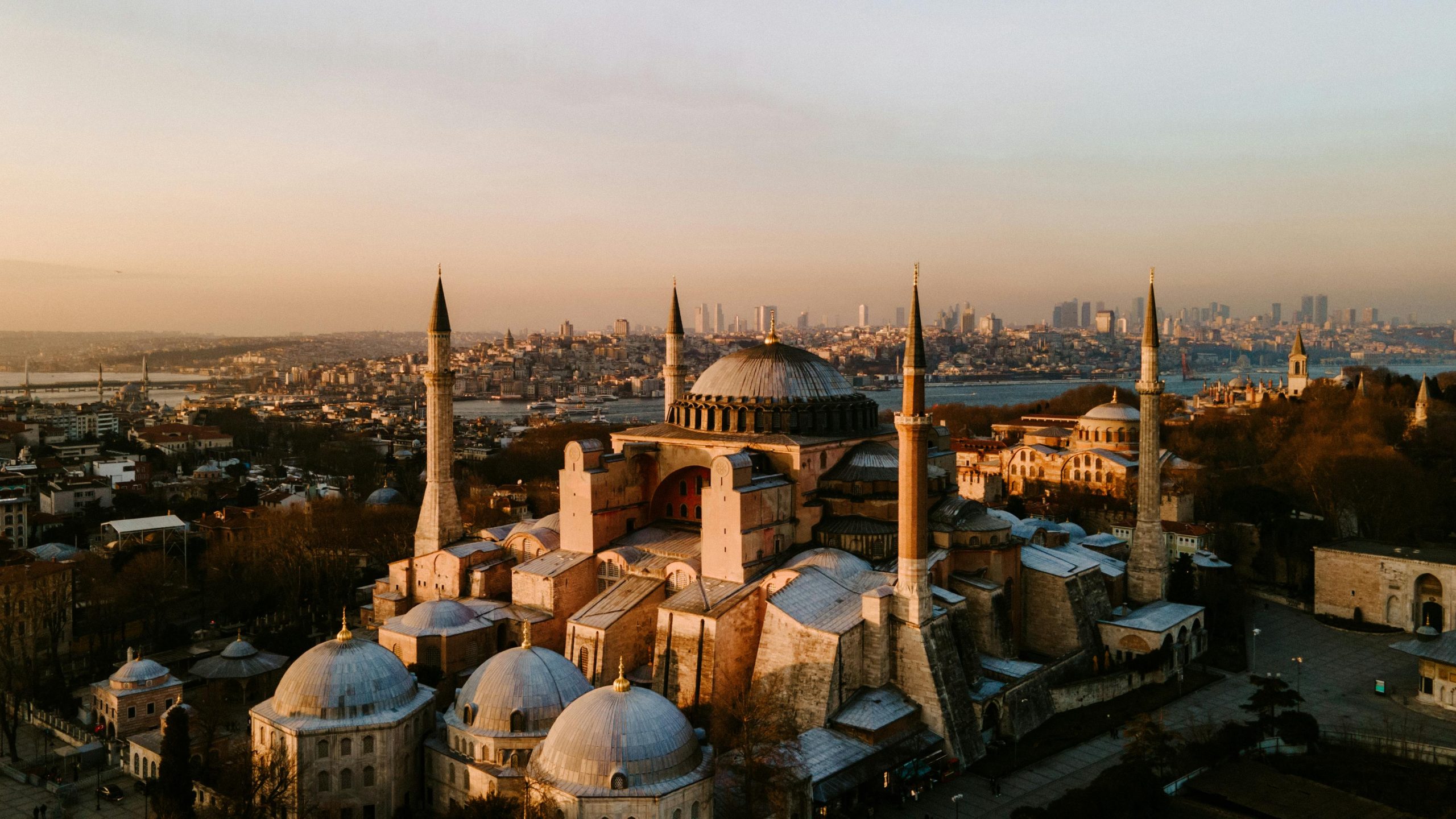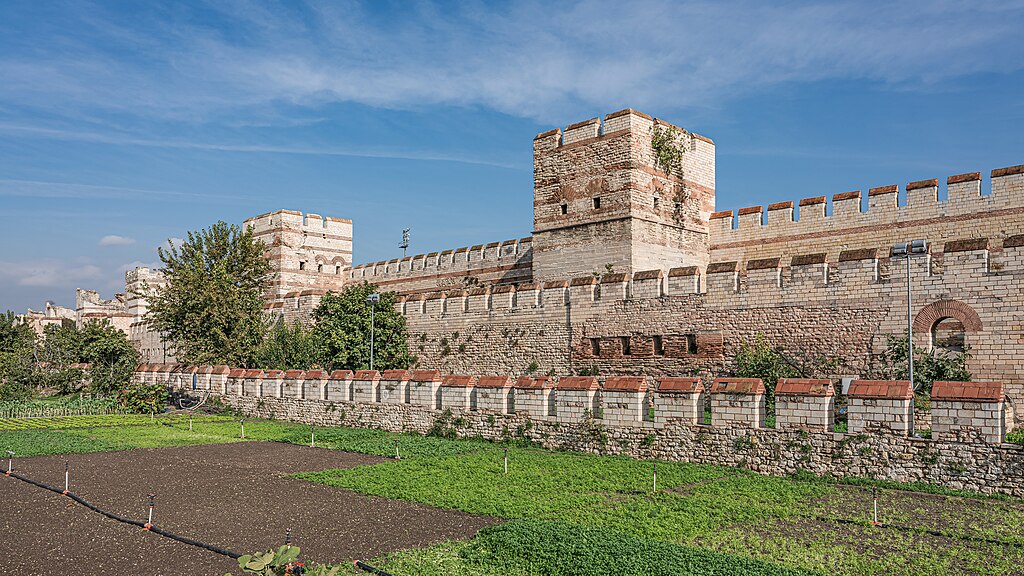Gate of the Spring, Istanbul
City Gate in Istanbul

Standing quietly between two ancient towers along Istanbul's mighty Theodosian Walls, the Gate of the Spring — or Pege Gate — marks one of the most dramatic turning points in Byzantine history. Named after the nearby Monastery of Zoodochos Pege (“Life-Giving Spring”) in Balıklı, this unassuming passage was the very gate through which Byzantine forces re-entered Constantinople in 1261, ending the Latin occupation that had lasted since the Fourth Crusade. For history enthusiasts, it's one of the must-see places in Istanbul, where a single act of bravery changed the fate of an empire.
The gate lies between the heptagonal towers 35 and 36, both of which were heavily reconstructed in late Byzantine times. A 1439 inscription on the southern tower records restorations commissioned by Emperor John VIII Palaiologos, one of the last rulers before the city's final fall in 1453. Despite its weathered stones and quiet surroundings, the Gate of the Spring remains a powerful reminder of Constantinople's resilience — a great place to visit on a walking tour of Istanbul's ancient city walls.
Table of Contents
History and Significance of the Gate of the Spring
The Gate of the Spring takes its name from the famous Monastery of Zoodochos Pege, located just outside the city walls in modern-day Balıklı. The monastery's sacred spring was believed to have miraculous healing powers, attracting pilgrims from across the empire. The gate provided direct access between the city and this venerated sanctuary.
The gate's defining moment came on 25 July 1261. After the Latin Empire had ruled Constantinople for nearly six decades, a small Nicaean force under General Alexios Strategopoulos discovered that the Latin garrison and Venetian fleet were away on a campaign. Acting on intelligence from local farmers, Strategopoulos seized the opportunity. His troops slipped through the Gate of the Spring, overpowered the few guards, and opened the way for the main army to enter. The surprise attack led to the swift recapture of the city, marking the restoration of the Byzantine Empire under Emperor Michael VIII Palaiologos.
The event remains one of the most decisive in medieval history — a tale of daring, faith, and opportunity that briefly restored Byzantium's glory. Later, in the 15th century, Emperor John VIII repaired the gate's towers, leaving behind the marble inscription still visible today. Excavations in 1998 revealed even older layers beneath the structure, including 4th- and 5th-century reliefs and tombs, proving the site's deep-rooted significance.
Things to See and Do at the Gate of the Spring
Visitors to the Gate of the Spring can explore the remnants of its defensive towers and the surrounding stretch of the Theodosian Walls. The towers' massive brickwork and stone foundations showcase the mix of restoration phases from the late Byzantine and Ottoman eras. The 1439 inscription by Emperor John VIII can still be seen on the southern tower — a poignant link to the empire's twilight years.
A short walk beyond the gate leads to the Church of the Zoodochos Pege (Balıklı Monastery), where the sacred spring continues to flow. The tranquil courtyard and crypt of the modern church preserve the ancient site's spiritual legacy. For those interested in panoramic views, climbing nearby sections of the walls offers sweeping vistas over the Sea of Marmara and the western suburbs of Istanbul. The area's relative quiet makes it ideal for reflection and photography.
How to Get There
The Gate of the Spring is located in the Fatih district of Istanbul, near the Balıklı and Silivrikapı neighborhoods. The nearest Marmaray station is Kazlıçeşme, approximately a 20-minute walk from the site. You can use the official TCDD Taşımacılık website to check schedules, compare routes, and purchase tickets for Turkey's national and regional trains operated by TCDD. For a more streamlined experience (especially if you prefer an English interface or want to compare across countries), we recommend using Omio, which allows you to easily compare prices, schedules, and book train tickets across Turkey and the rest of Europe — all in one place. For those arriving by car, limited parking is available around Balıklı Caddesi and near the Zoodochos Pege Monastery. If you are looking to rent a car in Turkey I recommend having a look at Discover Cars, first, as they compare prices and review multiple car rental agencies for you. Visitors can also reach the area by taxi or bus from central Sultanahmet, following the old line of the Theodosian Walls westward.
Practical Tips on Visiting the Gate of the Spring
- Best time to visit the Gate of the Spring: Morning or late afternoon when the light enhances the brickwork.
- Entrance fee in Euros: Free.
- Opening hours: Accessible at all times.
- Official website: Not applicable.
- How long to spend: 30–45 minutes, or longer if visiting Balıklı Monastery.
- Accessibility: Uneven terrain and steps near the towers.
- Facilities: Limited nearby; bring water and essentials.
- Photography tip: Capture the gate framed by its twin towers for dramatic composition.
- Guided tours: Featured in select Byzantine history and city wall tours.
- Nearby food options: Local cafés and bakeries near Balıklı and Silivrikapı.
Is the Gate of the Spring worth visiting?
Absolutely. The Gate of the Spring is one of the top sights in Istanbul for those who want to experience history beyond the city center. It's where the Byzantine Empire rose from defeat and reclaimed its capital — a site where one small act reshaped centuries of history. Standing before its worn stones, it's easy to imagine the moment when Constantinople's destiny turned once again toward glory.
FAQs for Visiting the Gate of the Spring
Why is it called the Gate of the Spring?
It's named after the nearby Monastery of Zoodochos Pege (“Life-Giving Spring”), famed for its healing waters.
What happened here in 1261?
General Alexios Strategopoulos and his Nicaean troops entered through this gate to recapture Constantinople from the Latin Empire.
Can visitors still see the 1439 inscription?
Yes, it remains visible on the southern tower, marking the repairs by Emperor John VIII Palaiologos.
Are the excavations beneath the gate accessible?
No, the subterranean findings from the 1998 excavation are closed to the public but documented by archaeologists.
Is the nearby spring still active?
Yes, the sacred spring continues to flow inside the Balıklı Monastery complex.
Nearby Attractions to the Gate of the Spring
- Balıklı Monastery (Zoodochos Pege) – A sacred Orthodox site known for its holy spring and catacombs.
- Silivrikapı Gate – A nearby city gate with well-preserved Byzantine masonry.
- Golden Gate – The ceremonial triumphal arch once used by Byzantine emperors.
- Yedikule Fortress – A massive Ottoman fort incorporating parts of the Theodosian Walls.
- Theodosian Walls – The monumental defensive fortifications that protected Constantinople for centuries.
The Gate of the Spring appears in our Complete Guide to Visiting Istanbul!
This website uses affiliate links which may earn a commission at no additional cost to you!
Visiting Gate of the Spring
Nearby Attractions
- Xylokerkos Gate (0.7) km
City Gate in Istanbul - Gate of Rhesios (0.9) km
City Gate in Istanbul - Panorama 1453 History Museum (1.4) km
Museum in Istanbul - Golden Gate (1.4) km
City Gate in Istanbul - Yedikule Fortress (1.4) km
Castle in Istanbul - Gate of Saint Romanus (1.7) km
City Gate in Istanbul - Marble Tower (2.0) km
Tower in Istanbul - Fifth Military Gate (2.0) km
City Gate in Istanbul - Gate of Charisius (3.1) km
City Gate in Istanbul - Chora Church (3.1) km
Church in Istanbul


